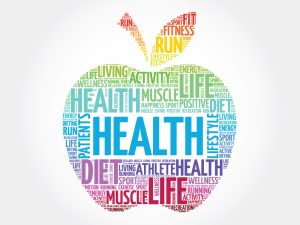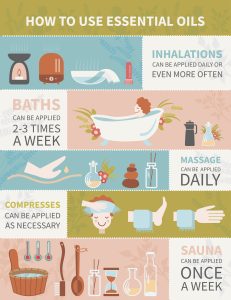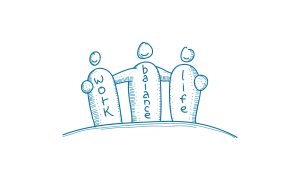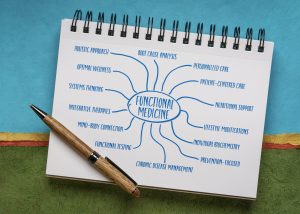Organizational behavior in healthcare plays a crucial role in shaping the success and effectiveness of medical institutions. The complex interplay of human interactions, leadership dynamics, and workplace culture has a significant impact on patient outcomes and the quality of care delivered. Healthcare managers and professionals must navigate a unique set of challenges within the healthcare industry, balancing the needs of patients, staff, and organizational goals.
To improve healthcare management and enhance the performance of the healthcare workforce, it is essential to understand the key aspects of organizational behavior. This article explores best practices and strategies in leadership, communication, employee motivation, and organizational culture within healthcare settings. By examining these critical areas, healthcare professionals can gain valuable insights to optimize their work environments, boost team productivity, and ultimately provide better care to patients.

Please also review AIHCP’s Healthcare Manager Certification Program. The program is online and independent study and open to healthcare professionals seeking to further their professional career in management.
Understanding Organizational Behavior in Healthcare
Definition and Importance
Organizational behavior in healthcare is an applied behavioral science that combines psychological, sociological, and anthropological concepts to understand what motivates productivity and job satisfaction in healthcare settings. It plays a crucial role in hospital administration and medical care, significantly influencing patient outcomes, staff satisfaction, and cost savings. The success of any healthcare organization depends heavily on how their staff behaves, especially in a field where the stakes are so high.
Key Components
Organizational behavior in healthcare explores several key components:
- Individual behavior and attitudes
- Group dynamics and team interactions
- Leadership and management styles
- Organizational culture and structure
- Decision-making processes
- Communication patterns
By examining these components, healthcare leaders can develop strategies that foster productive teamwork, enhance organizational performance, and improve patient care. This approach helps to ensure patient safety, promote patient-centered care, encourage ethical behavior among healthcare professionals, and drive quality improvements.
Challenges in Healthcare Settings
Healthcare organizations face numerous challenges related to organizational behavior:
- Hierarchical structures: Healthcare settings often adhere to hierarchical structures, which can contribute to communication lapses. Professionals may be reluctant to report errors or incidents to superiors due to concerns about career advancement.
- Diverse workforce: The healthcare industry draws from an exceptionally diverse pool of professionals. This diversity increases the need for leaders with sound organizational behavior knowledge to manage varied personalities and backgrounds effectively.
- Resistance to change: Implementing evidence-based practices can be challenging due to entrenched practices and resistance to new approaches. Collecting evidence for clinical recommendations is an arduous task that can take up to 17 years.
- Patient safety concerns: Common safety challenges, including surgical errors, preventable infections, and medication use liabilities, exact enormous human and financial costs. Addressing these issues requires managers fluent in organizational behavior management practices.
- Meeting rising patient expectations: Modern patients are increasingly attentive to patient safety practices, requiring healthcare organizations to adapt and improve continuously.
To address these challenges, healthcare organizations need to be flexible and meet diversity challenges through inclusivity. Implementing positive reinforcement and organizational behavior management techniques can encourage open communication among practitioners and managers. The ultimate goal is to create an environment that supports effective and safe patient care while meeting the evolving expectations of patients and healthcare professionals alike.
Leadership and Management in Healthcare Organizations
Effective leadership and management play a crucial role in shaping the success and performance of healthcare organizations. From providers on the front lines to office staff and administrators, healthcare professionals face rewarding but challenging work. To navigate the complex healthcare landscape, leaders must adopt appropriate leadership styles, implement effective decision-making processes, and manage change effectively. Healthcare managers need to employ leadership skills for the ultimate success of their department.

Effective Leadership Styles
Healthcare leaders have several leadership styles at their disposal, each with its own strengths and applications. Some of the most common leadership styles in healthcare include:
- Transformational: This style focuses on shared values and ideas, forging relationships, and inspiring confidence and respect among staff members. Transformational leaders often have a strong vision and lead by example.
- Transactional: Characterized by an exchange between leaders and staff members, transactional leadership involves clear structure, direction, and organization of workload and staff.
- Servant: Servant leaders prioritize serving others, encouraging creativity, promoting learning, and fostering a sense of community and team growth.
- Democratic: This style encourages employee participation in decision-making, promotes open communication, and empowers staff to take charge and be accountable for their work.
- Situational: Situational leaders adapt their management style based on the needs of specific situations, combining elements from various leadership models.
Research has shown that effective leadership styles, particularly transformational leadership, have significant positive associations with high levels of patient satisfaction and reduction of adverse effects. Furthermore, empowering leadership has an indirect impact on reducing mortality rates by inspiring, retaining, and supporting experienced staff.
Decision-Making Processes
Decision-making in healthcare management has a profound impact on the quality, efficiency, and sustainability of healthcare systems. Effective decision-making processes involve:
- Collaboration: Healthcare leaders must foster collaboration among diverse stakeholders to design strategies that optimize healthcare delivery and elevate user experiences.
- Data-driven insights: Utilizing data analytics tools and input from data analysts to inform decision-making is crucial.
- Innovation focus: Decision-makers should continuously explore groundbreaking technologies and trends to enhance diagnoses, treatment methods, and care coordination.
- Resource allocation: Optimizing the allocation of personnel, equipment, and funding is a key aspect of healthcare management decisions.
- Risk assessment: Implementing strategies to ensure patient safety and mitigate risks is an essential part of the decision-making process.
Healthcare managers must also consider various types of decisions, including procurement and vendor selection, technology adoption, partnerships and collaborations, financial planning, and regulatory compliance.
Change Management
Change management is a critical aspect of healthcare leadership, especially given the rapid pace of changes in the industry. Effective change management strategies include:
- Integrating change discussions into existing meetings to make it a natural part of leaders’ work.
- Focusing on the employee experience to build desire for important changes and address retention issues.
- Engaging employees in shaping the direction of changes that impact their daily work.
- Taking an enterprise focus to understand how various changes intersect and impact the organization as a whole.
- Leveraging key influencers as change champions to help busy managers fulfill their roles during change.
- Building change capabilities throughout the organization through an effective enterprise change management (ECM) strategy.
By implementing these strategies, healthcare leaders can navigate the complexities of the industry, improve patient outcomes, and drive operational efficiency. Embracing change management principles helps organizations prepare for the future and overcome current and future challenges in healthcare.
Communication and Teamwork

Effective communication and teamwork are essential components of organizational behavior in healthcare settings. These elements play a crucial role in enhancing patient outcomes, improving workplace environments, and fostering a culture of collaboration among healthcare professionals. Healthcare managers and those in nursing management need to be effective communicators.
Interprofessional Collaboration
Interprofessional collaboration in healthcare involves a team-based approach to patient care, resulting in improved outcomes and a better work environment. As healthcare delivery becomes increasingly complex, coordination among nurses, physicians, pharmacists, social workers, and other healthcare disciplines has become imperative for enhancing workplace environments, health systems, and patient care.
The benefits of interprofessional collaboration include:
- Comprehensive and well-coordinated care
- More accurate diagnoses and treatment plans
- Prevention of adverse events
- Promotion of a culture of safety within healthcare organizations
To facilitate effective interprofessional collaboration, healthcare organizations should consider implementing clinical communication technology. This technology maintains constant connectivity among care team members, enabling them to reach out to physicians, share critical laboratory results, and communicate efficiently through secure messaging, voice, or video.
Conflict Resolution
Conflicts are inevitable in the stressful environment of healthcare. Tension and stress can result from miscommunication, differing opinions, and varying priorities. To maintain a harmonious work environment and provide quality patient care, healthcare managers and nursing managers must develop effective conflict resolution skills.
Some common sources of conflict in healthcare settings include:
- Staff conflicts regarding workload distribution and shift preferences
- Interdisciplinary disagreements about treatment plans and responsibilities
- Ethical disputes on topics such as end-of-life care and patient autonomy
- Communication breakdowns resulting in misunderstandings
To address conflicts effectively, healthcare professionals should:
- Foster open communication
- Mediate and negotiate
- Identify underlying issues
- Encourage empathy
- Seek compromise
- Provide guidance and coaching
- Encourage professional behavior
- Follow established policies and procedures
- Document issues and provide follow-up
Building Trust
Trust is a fundamental aspect of effective teamwork in healthcare settings. Building trust among healthcare professionals has a significant impact on patient outcomes and the overall quality of care provided. To foster trust within healthcare teams, several strategies can be implemented by healthcare managers:
- Open communication: Keeping communication channels open allows team members to understand each other’s roles and responsibilities better.
- Consistent collaboration: Working together regularly helps build confidence within the team and facilitates the development of trust over time.
- Interprofessional education: Exposing healthcare professionals to other disciplines early in their education can positively influence their perception of teamwork and foster future collaborative practice.
- Cultural competence: Developing empathy and cultural awareness among healthcare providers has become increasingly important, especially for patients from diverse backgrounds.
- Shared experiences: Having mutual patients and working together over time helps build trust among healthcare professionals.
- Demonstrating reliability: Following through on commitments and being timely in responses and actions contributes to building trust among team members.
By focusing on these aspects of communication and teamwork, healthcare organizations can create a more collaborative and effective work environment, ultimately leading to improved patient care and outcomes.
Employee Motivation and Engagement

Motivation plays a crucial role in shaping employee behavior and performance within healthcare organizations. It can be defined as the influence or drive that causes an individual to achieve a certain goal. Understanding and addressing employee motivation has a significant impact on job satisfaction, productivity, and ultimately, the quality of patient care. Healthcare managers need to be able to motivate employees to reach their ultimate potential.
Theories of Motivation
Several theories have been developed to explain employee motivation in organizational behavior. These can be broadly categorized into content and process theories.
Content theories focus on the assumption that individuals are motivated by their desire to satisfy underlying needs. Some prominent content theories include:
- Maslow’s Hierarchy of Needs: This theory proposes five categories of needs, ranging from physiological needs to self-actualization. In healthcare, professionals may be motivated to perform their jobs effectively and provide safe, high-quality patient care to satisfy their esteem needs.
- Herzberg’s Two-Factor Theory: Also known as the motivator-hygiene theory, it identifies five motivating features of work (achievement, recognition, the job itself, responsibility, and advancement) and five demotivating factors (institutional politics, management approach, supervision pay, poor work relationships, and poor working conditions).
- McClelland’s Needs Theory: This theory identifies three types of motivational needs: achievement, power, and affiliation. Many healthcare professionals are categorized as achievement-motivated, driven by intrinsic factors such as a strong sense of calling and the desire to do their best.
Process theories, on the other hand, focus on how motivation occurs. These include:
- Expectancy Theory: This suggests that an individual’s motivation level varies based on their desire for a specific outcome and their perception of how their performance will achieve this outcome.
- Equity Theory: This assumes that individuals are motivated to perform based on their perception of their inputs (contributions) and outputs (recognition).
- Satisfaction-Performance Theory: This theory proposes that an individual’s performance leads to satisfaction, driven by both intrinsic and extrinsic motivators.
Job Satisfaction
Job satisfaction is defined as a pleasurable or positive emotional state resulting from the appraisal of one’s job or job experiences. It has a significant impact on healthcare organizations, affecting quality, productivity, effectiveness, and healthcare costs. Satisfied employees are considered key assets, especially in non-profit public organizations like hospitals.
Research has shown a positive correlation between job satisfaction and the quality of care provided. Conversely, low job satisfaction can lead to negative behaviors, including absenteeism, high stress levels, turnover, exhaustion, and increased medical errors.
To enhance job satisfaction, healthcare managers should:
- Seek employee opinions and include them in decision-making processes
- Provide adequate resources and updated equipment
- Foster open communication and support among staff and supervisors
- Offer opportunities for professional growth and advancement
Work-Life Balance
Maintaining a healthy work-life balance has become increasingly important for healthcare employees. Medical professionals often face long hours, high stress levels, and demanding workloads, which can negatively impact both their personal and professional lives.
To promote work-life balance, healthcare organizations and healthcare managers can:
- Offer flexible work schedules, including remote documenting or telehealth options where possible
- Provide on-site childcare facilities
- Implement comprehensive paid leave policies, differentiating between sick leave, vacation days, and parental leave
- Offer employee wellness programs, such as stress management classes or fitness programs
By addressing these aspects of employee motivation and engagement, healthcare organizations can create an environment that promotes job satisfaction, reduces burnout, and ultimately leads to improved patient care and outcomes.
Organizational Culture in Healthcare

Organizational culture in healthcare is a multidimensional concept that encompasses shared values, beliefs, and norms influencing how employees think, feel, and behave in the workplace. It represents a system of shared meaning that distinguishes one organization from another, shaping the way members perceive themselves and their work. Healthcare organizational culture comprises both tangible and intangible aspects, including superficial patterns of behavior, observable symbols, and ceremonies, as well as deeper-seated values, assumptions, and beliefs.
Types of Organizational Cultures
Healthcare organizations often exhibit a dynamic cultural mosaic made up of multiple, complex, and overlapping subcultures. These subcultures are most notably delineated along professional lines, with significant differences between groups such as doctors and managers. For instance:
- Doctors may focus on patients as individuals and view evidence through a positivist natural sciences lens.
- Managers may be more concerned with patients as groups and value a social science-based experiential perspective.
These cultural divergences have important implications for collaborative work, especially for individuals in hybrid roles who may either retain a cultural allegiance to their base group or seek to adopt the cultural orientations of their new role.
Organizational cultures can be categorized as strong or weak:
- A strong culture exists when every member of the organization agrees and follows the agreed pattern of behavior that has proven beneficial to the whole organization.
- A weak healthcare organizational culture refers to values and beliefs not strongly and widely shared within the organization.
Impact on Patient Care
The organizational culture has a significant impact on the quality of patient care and overall organizational performance. Research indicates that there is no single “best” culture that always leads to success across all performance domains. Instead, the aspects of performance valued in a given culture are enhanced in organizations with strong congruence with that culture.
Key impacts of organizational culture on patient care include:
- Continuous evidence that patients’ needs are met in a person-centered way
- Staff empowerment and commitment
- Achievement of standards, goals, and objectives
- Development, use, and sharing of knowledge and evidence
A strong culture has a powerful influence on improving employee contributions, enhancing self-confidence and commitment, reducing job stress, and improving ethical behavior. This, in turn, leads to better patient outcomes and overall quality of care.
Strategies for Cultural Change
To implement effective cultural change in healthcare organizations, leaders and healthcare managers should consider the following strategies:
- Conduct a thorough cultural audit: Before implementing change, it is crucial to understand the existing culture through effective diagnosis. This involves acquiring an appreciation of the currently prevailing culture using both quantitative and qualitative assessment tools.
- Foster teamwork: Encourage a culture of teamwork among hospital staff with shared beliefs of collaboration and cooperation. This affects levels of engagement and participation in collective decision-making during change initiatives.
- Promote open communication: Ensure that staff across departments feel valued, included, and informed by management about changes occurring in the workplace.
- Address potential barriers: Be mindful of possible barriers that may block or attenuate purposeful change, such as lack of ownership or resistance from disaffected individuals or professional groups.
- Develop enabling factors: Focus on individual factors like transformational leadership, skilled facilitation, and role clarification, as well as organizational factors such as flattened and transparent management, an enabling approach to leadership and decision-making, organizational readiness, and human resource management support.
- Balance continuity and change: Consider whether first-order change (doing what you do better) or second-order change (complete overhaul) is more appropriate for the organization’s current situation.
By implementing these strategies, healthcare organizations can work towards creating a supportive organizational culture that prioritizes safety, teamwork, and employee involvement in decision-making, ultimately leading to improved patient care and organizational performance.
Performance Management and Quality Improvement

Performance management and quality improvement are essential components of organizational behavior in healthcare settings. These processes help healthcare organizations enhance patient care, streamline operations, and achieve their strategic objectives. By implementing effective performance management systems and continuous improvement initiatives, healthcare providers can optimize their services and deliver better outcomes for patients. Healthcare managers can help employees maximize performance.
Setting Goals and Objectives
Goal setting plays a crucial role in performance management within healthcare organizations. It ensures that all employees understand their roles, expectations, and how they contribute to the organization’s success. Healthcare organizations often use frameworks such as Objectives and Key Results (OKRs) to define clear objectives and measurable outcomes.
When setting goals, healthcare organizations should consider the following:
- Align goals with organizational objectives
- Ensure goals are specific, measurable, achievable, relevant, and time-bound (SMART)
- Involve employees in the goal-setting process
- Establish a smaller set of priorities to focus efforts and deliver breakthrough change
Examples of healthcare OKRs include:
- Enhancing patient experience
- Ensuring clinical excellence and quality care
- Improving operational efficiency and resource optimization
- Contributing to community health through outreach programs
- Enhancing staff well-being and professional development
Measuring Performance
Performance measurement has an impact on improving healthcare quality, efficiency, and outcomes. Healthcare organizations use various metrics to evaluate their performance and identify areas for improvement. Some essential healthcare performance measures include:
- Length of stay
- Readmission rates
- Patient satisfaction (HCAHPS scores)
- Mortality rates
- Bed utilization rate
- Hospital incidents
- Average cost per discharge
- Operating margin
These measures help healthcare institutions analyze data, identify gaps in care, recognize above-standard performance, and monitor changes in quality of care over time. Performance measurement initiatives typically involve the active participation of physicians and hospital staff to ensure the measures are meaningful and the data is accurate.
Continuous Improvement Initiatives
Continuous improvement is a systematic, sustainable approach to enhancing the quality of care and outcomes for patients. It involves ongoing efforts to identify and reduce waste, increase efficiency, and improve patient satisfaction. Healthcare organizations implement various continuous improvement strategies, including:
- Lean methodology: Focuses on identifying and reducing areas of waste across all levels of the organization
- Plan-Do-Check-Act (PDCA) cycle: A step-by-step process for testing and refining changes
- Institute for Healthcare Improvement (IHI) model: Designed to address issues that can be solved quickly and immediately
To successfully implement continuous improvement initiatives, healthcare organizations should:
- Secure leadership buy-in and support
- Foster a culture of self-analysis and learning
- Empower frontline staff to identify and solve problems
- Provide ongoing training and coaching
- Celebrate early successes to build momentum
- Focus on patient-centered improvements
- Leverage technology to support improvement efforts
By integrating performance management and quality improvement initiatives, healthcare organizations can create a culture of excellence, enhance patient care, and achieve their strategic objectives. These efforts contribute to better health outcomes, reduced costs, and increased satisfaction for both patients and healthcare professionals.
Patient-Centered Care and Organizational Behavior
Patient-centered care has an impact on organizational behavior in healthcare settings, focusing on ensuring patient safety, promoting ethical behavior among healthcare professionals, and implementing changes to increase patient satisfaction and drive quality improvements. This approach recognizes the inseparable integration of worker safety and patient safety, emphasizing the need for a strong culture of safety within healthcare organizations.
Patient Satisfaction
Patient satisfaction has a significant influence on clinical outcomes and healthcare performance. Studies have shown a positive relationship between organizational culture and customer satisfaction. For instance, Greenslade and Jimmieson found that organizational climate for service predicted performance, which, in turn, predicted patient satisfaction. Additionally, Tzeng et al. described the strength of organizational culture as the extent to which staff view the organization as having clear communication of directions and values, which was positively correlated with job satisfaction and patient satisfaction.
Empowering leadership has a substantial impact on patient satisfaction, with 17 out of 19 patient satisfaction items showing correlation coefficients of medium effect size or larger. Employee engagement and psychological safety/trust also demonstrated strong correlations with patient satisfaction measures. These findings highlight the importance of organizational factors in shaping patient experiences and outcomes.
Patient Safety
Patient safety has become a national priority since the publication of the Institute of Medicine’s seminal report, “To Err is Human: Building a Safer Health Care System.” The report emphasized the pivotal role of system failures and the benefits of a strong safety culture in preventing medical errors. It also highlighted the interconnectedness of patient and worker safety, noting that hazards to healthcare workers due to lapses in infection control, fatigue, or faulty equipment may result in injury or illness not only to workers but also to patients.
Several studies have found organizational factors to be the most significant predictor of safe work behaviors. Compliance with standard precautions increased when workers felt that their institution had a strong commitment to safety and when institutions targeted interventions at improving organizational support for employee health and safety. The Centers for Disease Control and Prevention’s Healthcare Infection Control Practices Advisory Committee has noted that organizational characteristics, including safety culture, influence healthcare personnel adherence to recommended infection control practices.
Patient Engagement
Patient engagement has become increasingly important in healthcare, driven by increased consumerism and the COVID-19 pandemic. Providers must remain educated and focused on patient engagement preferences, including increased transparency during care, the use of technology, and post-discharge communication. Patient-centered practices have resulted in improved outcomes as they evolve to meet consumer expectations.
Research has shown that patients with lower engagement levels, as measured by the Patient Activation Measure (PAM), are more likely to experience major medication errors, emergency department visits, and unplanned readmissions. Furthermore, patients with the lowest engagement rates showed total costs of care that were 8% higher in the first year and 21% higher in the next year compared to patients with high engagement scores.
To enhance patient engagement, healthcare organizations can implement several strategies:
- Involve patients in care decisions to promote more realistic expectations and greater adherence to treatment plans.
- Implement early follow-up programs post-discharge to reduce readmission rates.
- Utilize technology, such as patient engagement mobile and web-based apps, to keep patients and families informed about progress and recovery milestones.
- Develop aftercare programs to support patients post-discharge, including regular check-ins and access to healthcare professionals.
By focusing on patient-centered care and incorporating these strategies into organizational behavior, healthcare institutions can improve patient outcomes, enhance satisfaction with the care experience, reduce costs, and even benefit the clinician experience.
Conclusion

Organizational behavior in healthcare has a profound impact on patient outcomes, employee satisfaction, and overall institutional performance. By focusing on effective leadership, fostering open communication, and promoting a culture of continuous improvement, healthcare organizations can create an environment that supports high-quality care delivery. These efforts contribute to enhanced patient safety, increased job satisfaction among healthcare professionals, and improved operational efficiency.
To wrap up, the key to success in healthcare management lies in understanding and applying the principles of organizational behavior. This means prioritizing patient-centered care, encouraging teamwork, and adapting to the ever-changing healthcare landscape. By doing so, healthcare institutions can not only meet the rising expectations of patients but also create a workplace that attracts and retains top talent, ultimately leading to better health outcomes for communities they serve.
Please also review AIHCP’s Healthcare Manager Program and see if it meets your academic and professional goals. The program is online and independent study and open to qualified professionals seeking a four year certification.
FAQs
1. How is organizational behavior relevant to healthcare facilities?
Organizational behavior management plays a critical role in healthcare by promoting patient safety, adopting patient-centered care approaches, ensuring ethical conduct among healthcare staff, and implementing changes that enhance patient satisfaction and drive quality improvements.
2. What practices enhance accountability in healthcare organizations?
To improve accountability in healthcare, organizations can follow these steps:
- Step 1: Set clear expectations and standards.
- Step 2: Foster a culture of transparency and accountability.
- Step 3: Offer comprehensive educational programs.
- Step 4: Use technology to enhance accountability measures.
- Step 5: Create effective feedback mechanisms.
3. What are the four main components of organizational behavior?
The primary areas of organizational behavior include people, structure, technology, and the external environment. Understanding the interactions between these elements can lead to organizational improvements.
4. What does OBM entail in the context of Applied Behavior Analysis (ABA)?
In Applied Behavior Analysis (ABA), Organizational Behavior Management (OBM) involves the application of ABA principles to organizational settings. This approach focuses on analyzing and modifying the work environment to boost employee performance, business outcomes, and employee engagement.
Additional References
Gepke, V. et, al. (2022). “Health care professionals’ motivation, their behaviors, and the quality of hospital care: A mixed-methods systematic review”. Health Care Manage Rev. 2022 Apr-Jun; 47(2): 155–167. National Library of Medicine. Access here
Nembhard, I. (2020). “Moving organizational theory in health care forward: A discussion with suggestions for critical advancements”. Health Care Management Review 45(1):p E1-E12, 1/3 2020. | DOI: 10.1097/HMR.0000000000000271. Healthcare Management Review. Access here
Cunningham, T. (2008). “Organizational Behavior Management in Health Care: Applications for Large-Scale Improvements in Patient Safety”. National Library of Medicine. Access here
Talal ALFadhalah and Hossam Elamir. (2021). “Organizational Culture, Quality of Care and Leadership Style in Government General Hospitals in Kuwait: A Multimethod Study”. J Healthc Leadersh. 2021; 13: 243–254. Published online 2021 Oct 15. doi: 10.2147/JHL.S333933. National Library of Medicine. Access here

 Written by Nadine.
Written by Nadine. Written by John Anderson.
Written by John Anderson.











 Written by Veronica Turner.
Written by Veronica Turner.